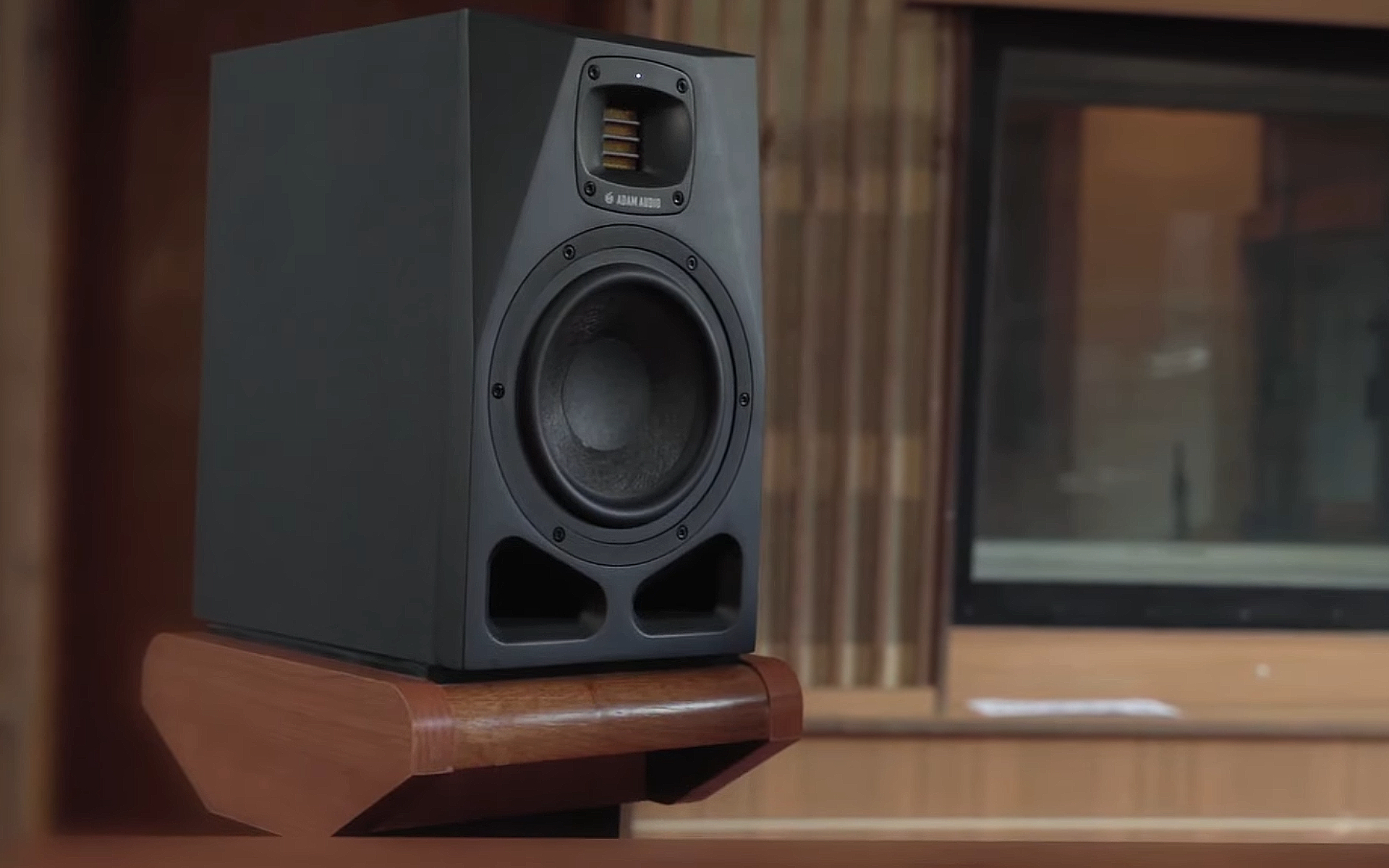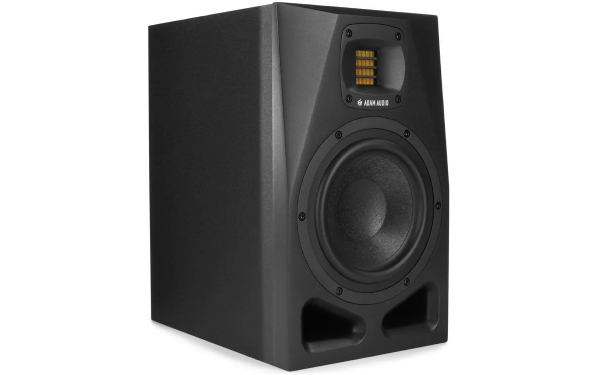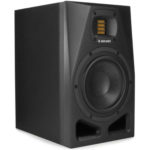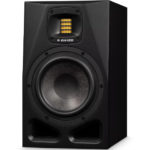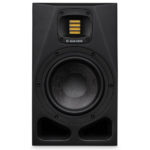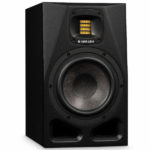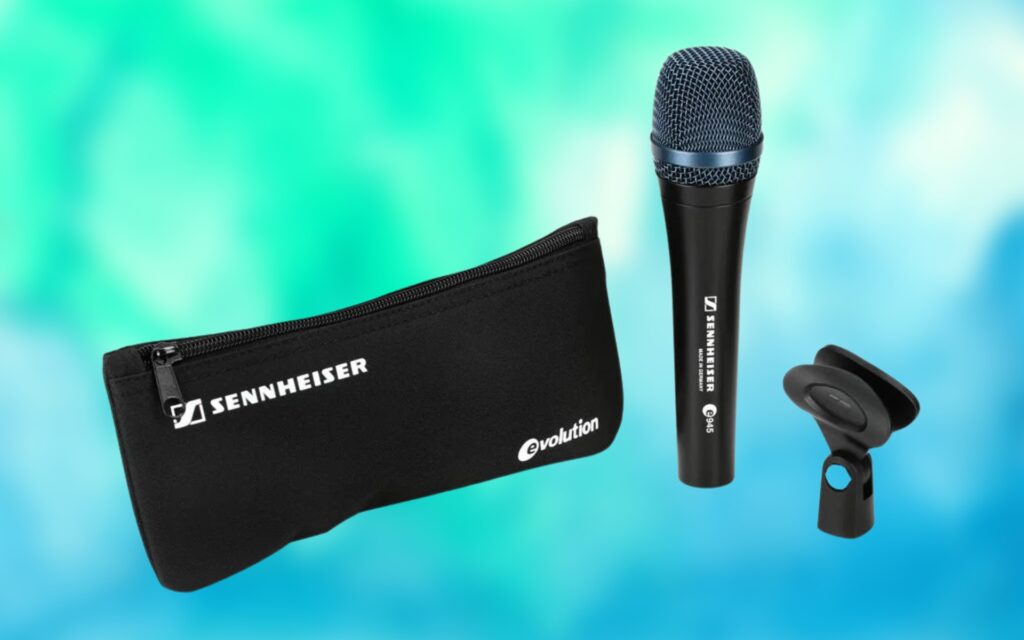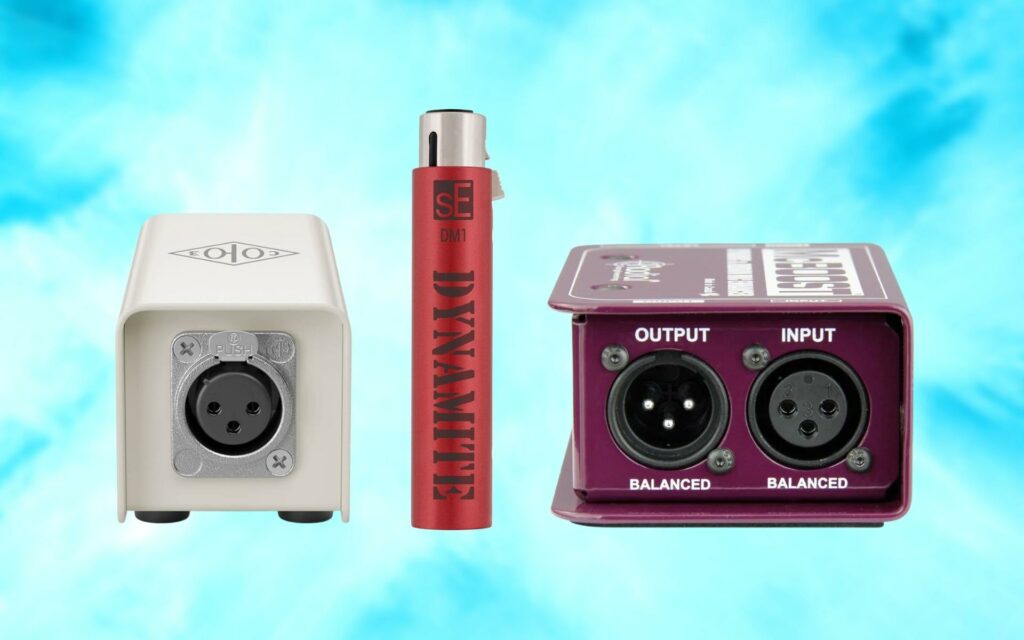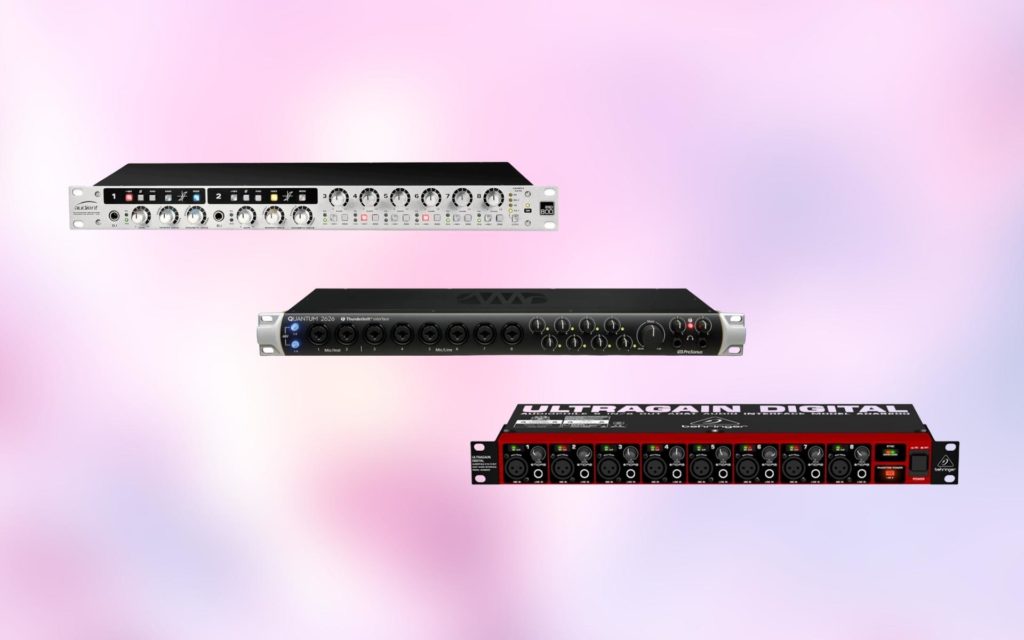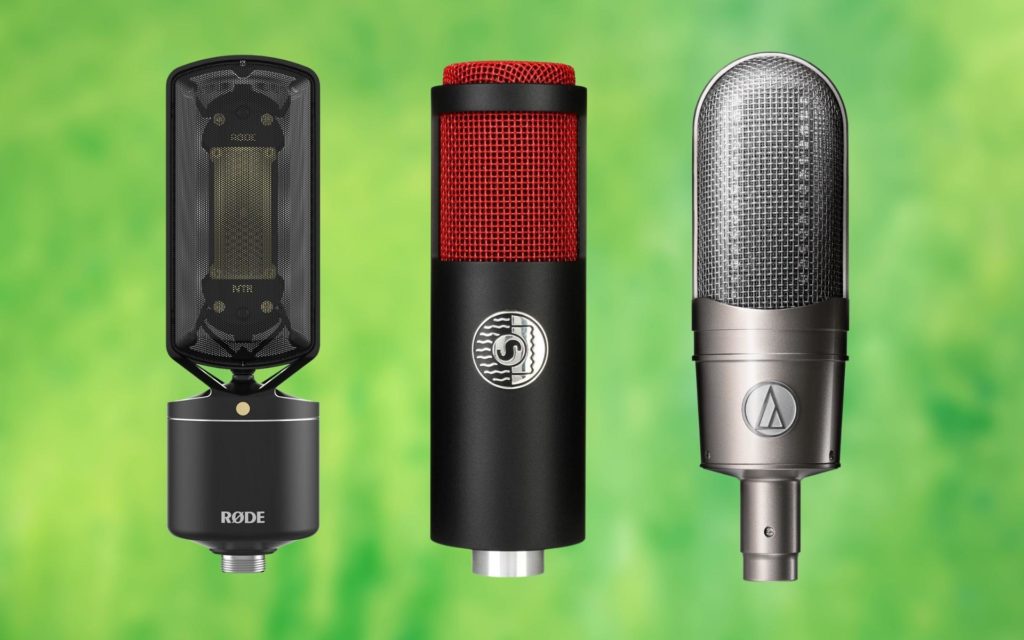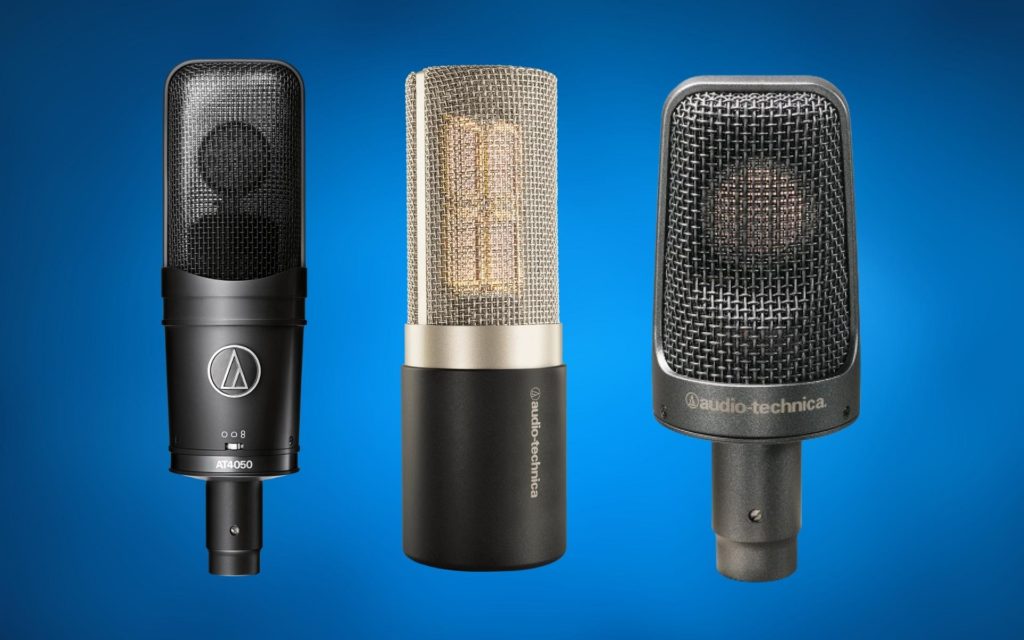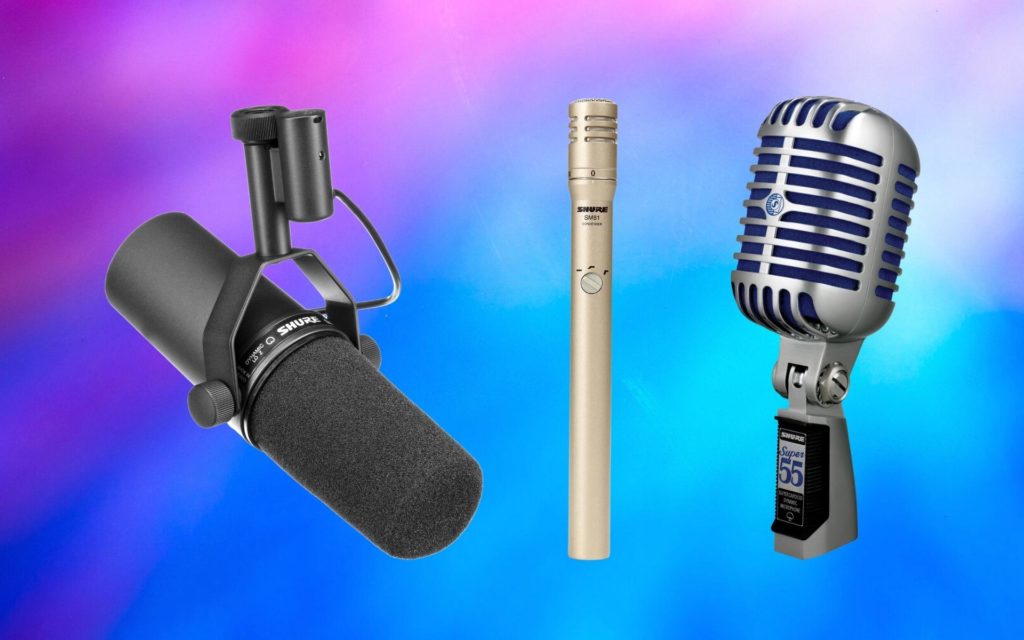We review products independently and our recommendations are genuine. If you purchase through links on our site, we may earn an affiliate commission. Learn More
The Adam Audio A7V is a capable studio monitor, which is ideal for mixing, mastering, and music production, particularly in home studios. Part of the A-Series, which is the successor to Adam Audio’s hugely popular AX Series, the A7V delivers pinpoint accuracy and stunning sonic clarity.
Adam Audio A7V Studio Monitor
Key Features
- 7-inch multi-layer mineral woofer
- 40 Hz - 45 kHz frequency response
- Rotatable X-ART tweeter
- 105 dB maximum SPL at 1m
- Automated room correction
- 1.3 inch voice coil
87/100
Adam Audio A7V Studio Monitor Gallery
Adam Audio A7V Studio Monitor Sound Quality
If there’s one attribute that is most important when it comes to studio monitors, it’s sound quality. Unlike other speakers, studio monitors aim to project sound with the best possible accuracy and definition so that you can hear each frequency band.
Adam Audio has built a reputation for manufacturing great-sounding studio monitors, and the A7V monitors continue this trend. There are no weak spots in the output, and overall, this monitor strikes a very good balance of lows, mids, and higher frequencies.
Central to the solid sound quality of the A7V studio monitor is the combination of a handcrafted X-ART tweeter with a 7-inch woofer.
The X-ART ribbon tweeter ensures the upper mids sound warm and powerful. It also outputs higher frequencies with a sparkling definition, without adding any noticeable coloration.
With a 96kHz sampling rate and 24-bit A/D converter, the A7V allows you to hear every detail of the audio you play. This makes the monitor a great choice for music production and creating accurate mixes of your tracks.
The 7-inch woofer widens the overall sweet spot of the studio monitor, making it compatible with any instrument, sample, vocal track, or other forms of audio.
The pickups that are installed on a guitar also impact capacitance, due to the impedance they create.
Adam Audio A7V Studio Monitor Dynamics
In addition to the tonal aspects of the Adam Audio A7V studio monitors, the dynamic qualities that they offer are also highly impressive. Dynamics is intrinsically linked to sound quality, and one of the strengths of this monitor is its ability to separate different sounds in the stereo field.
This separation allows the listener to hear the different frequencies even if they’re outputted simultaneously, with the exact same panning settings. It is largely a result of the 2-piece design of the A7V.
As I mentioned previously, the A7V is split into two parts. Firstly, the 7-inch woofer is tasked with projecting the bass and lower-midrange frequencies, which it does very capably considering its size.
Then, the X-ART tweeter takes care of the midrange and treble frequencies. These two components must work in harmony so that a dynamic balance is maintained regardless of the prominent frequencies during playback.
The low-frequency driver is made from Multi-Later Mineral (MLM), and it applies the ideal amount of compression needed to ensure a clear bass response. If too much compression or drive was added to the signal, the dynamic range would be limited.
A 1.3-inch voice coil and an amplifier that outputs 110W complete the woofer, and increases the sweet spot to facilitate efficient nearfield monitoring.
The high-frequency driver is equipped with a rotatable HPS Waveguide, and this is a real game-changer when it comes to dynamics. Furthermore, it pairs with the tweeter to minimize distortion even at high SPLs.
A sign of a good nearfield studio monitor is that you don’t need to crank up the volume to experience clear sound quality, and the A7V proves that this is achievable.
Adam Audio A7V Studio Monitor Build Quality
No matter how good a studio monitor sounds, if it is not built to a high standard, it won’t perform at its best for a long period. If you’re investing a significant amount into studio monitors, it’s important to have confidence in their longevity.
Adam Audio is a manufacturer that is renowned for making monitors that are solidly built. The key to this is the durable metal cabinets, which enclose the inner components and protect them from wear and tear.
This does come with a trade-off – the A7V Studio Monitor is quite heavy for a medium-sized studio monitor. However, I find it reassuring that the device feels bulky and has a considerable weight, as this means the housing is capable of shielding the components from damage.
Additionally, Adam Audio has paid close attention to the dimensions and physical design of this monitor. All of the offerings in the A-Series have a quartet of M8 threaded screw holes, with a depth of 10mm positioned in a rectangular shape.
This means that you have the option to either place the A7V on a monitor stand in your studio space or explore the mounting possibilities that are available to you.
Having several options when it comes to mounting and positioning the monitor means that you can figure out what is best suited to the acoustics and logistics of your space, to get the best sound possible.
The balanced XLR and unbalanced RCA input plugs are firmly embedded in the speaker cabinet and lock the cable connector in place to prevent movement and damage from occurring over time.
Adam Audio A7V Studio Monitor Tone & Coloration
All studio monitors alter the sound of audio at least slightly, but most producers and mixing engineers would agree that the less coloration is added to the original sound, the better.
If the studio monitors overly compress the sound, this may lead to a lack of compression being added during the mixing process. Likewise, if certain frequencies are boosted or reduced in prominence, the EQ process may be adversely affected.
The A7V by Adam Audio is guilty of neither of these common drawbacks. Not only does it produce a highly accurate tone compared to most other studio monitors in its price range, but the A7V actively tried to maintain a natural sound.
Part of this is down to the innovative features and components that Adam Audio has used in its A-Series monitors. For example, the tweeter is housed inside a purpose-built HPS waveguide, which propagates the high frequencies with meticulous precision.
It’s common for studio monitors to sound better either at short or long distances, but unless you invest in a particularly high-end set, you rarely get the best of both worlds. The A7V is one of the few studio monitors I’ve come across that sounds as good at close distances as it does from afar.
There are several ways that you can alter the tone and coloration produced by this studio monitor, which I’ll describe in the following section.
Adam Audio A7V Studio Monitor Features
Adam Audio is a manufacturer that is renowned for installing interesting and useful features on their studio monitors. This was evident in the previous AX monitor range, which solidified the brand as a major force in the industry.
The A7V includes a pair of voicing presets that you can select by toggling the control found on the rear of the panel. The first of these modes is labeled “Pure”, and when activated it results in a natural, unaltered tone that is perfect for mixing.
The “Pure” mode removes the bulk of the compression and EQ that the monitors add to audio, which is quite minimal in the first place anyway. Nevertheless, it’s a useful setting for audiophiles or highly attentive mixing engineers.
Secondly, you can select the “UNR” mode, which is short for “Uniform Natural Response”. This preset significantly alters the voicing of the monitor, adding a touch of excitement to certain frequencies and making the audio sound more immersive.
Although this mode may not be ideally suited to accurate mixing or equalization, it can be very useful when composing new material or simply listening to music, as it produces an engaging sound.
Another noteworthy feature of the Adam Audio A7V is its real-time remote control. This may seem a little complex at first, but once you get accustomed to the way it works, it increases the versatility of the monitor.
By connecting an Ethernet cable to the monitors, you can control the DSP-based aspects of the A7V active studio monitor using Adam Audio’s free A series software, which is available from their website.
Once the software has been downloaded and installed on your computer or laptop, you can control one or more A7V studio monitors, altering the EQ, and tonal aspects, and ensuring they are voiced correctly to suit the room you’re in.
Verdict
After thoroughly analyzing every aspect of the Adam Audio A7V studio monitor, I can confidently say that it’s one of the best options in its price range. The sound quality it produces is on par with many high-end monitors that would cost significantly more.
A large part of this monitor’s success is down to the innovative design of its manufacturer. Adam Audio has utilized every part of the A7V and ensured that each component contributes to the overall functionality of the device.
One of the aspects that stands out to me is the A7V’s ability to automatically adjust its sound to suit the specifics of the studio space it is being used in. This is achieved through the automated room correction collaboration with Sonarworks.
As someone who likes to take their studio setup to new locations frequently, I love the fact that the A7V can automatically tailor its performance to ensure maximum compatibility with the acoustics of a makeshift studio,
Physically, the A7V is built like a tank. While this may not be as important to you as the quality of the sound it produces, it’s a good idea to invest in studio monitors that won’t be damaged by inevitable bumps and scrapes.
The sound produced by the A7V is well rounded with no noticeable weak spots. The powerful 7-inch woofer maximizes the sweet spot, and this means you can use the A7V for nearfield monitoring or listening to your mixes at a distance.
Adam Audio A7V Studio Monitor At A Glance
Pros
- Clear midrange and high end from X-Art ribbon tweeter
- Wide sweet spot thanks to the 7-inch woofer
- DSP tuning tailors the monitor to any space
- No distortion even at high sound pressure levels
Cons
- Relatively tall design
- Sold as a single studio monitor rather than a pair

